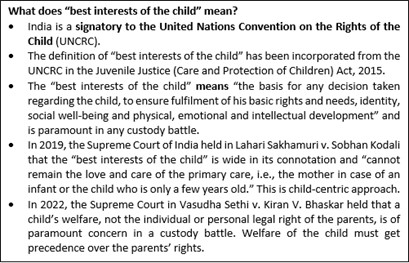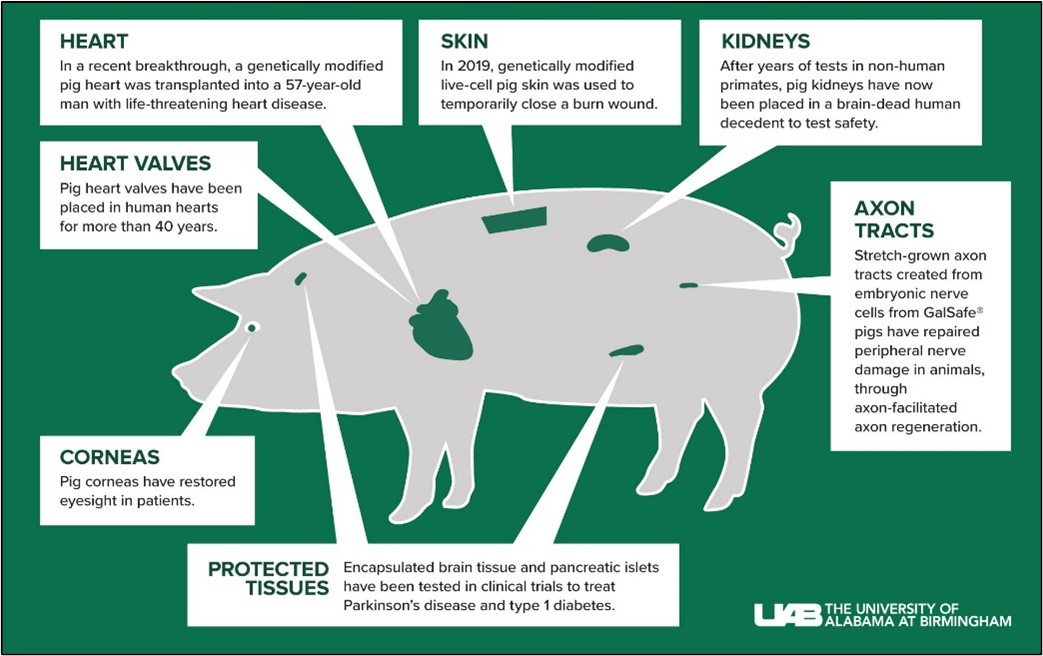Monday, 31st January 2022
Federated Digital Identities
In News
The Ministry of Electronics and Information Technology (MeitY) has proposed to establish ‘Federated Digital Identities’ to optimise the number of digital identities that a citizen needs to have.
About the News
- The government has proposed the new model of “Federated Digital Identities” under the ‘India Enterprise Architecture’ (IndEA) 2.0.
- IndEA was first proposed and designed in 2017 “with a view to enable alignment of the IT developments with the business vision of government organisations.”
- In the 2.0 version, InDEA proposes a framework that enables public as well as private sector companies to build and design IT architecture “that can span beyond their organisational boundaries” to deliver “holistic and integrated services to the customers”.

What are Federated Digital Identities?
- Under “Federated Digital Identities” multiple digital IDs — from PAN and Aadhaar to driving licence and passport numbers — could be interlinked, stored, and accessed via one unique ID.
- It would also serve as a key to a registry where all different state and Central identities could be stored.
Need for creating such an ID
- Repeated verification process is costly, error prone and inconvenient to citizens.
- As various government platforms across domains are being digitised, there is a tendency to create more IDs each with its own ID card, ID management, and effort to make it unique, etc,
- Having a multitude of IDs, especially to interact with the government, makes it harder for common man for whom these are created.
- Given the diversity in education, awareness and capabilities, multiple IDs also has a potential to further create exclusion scenarios.
Important features of the Federated Digital Identities
- Citizens would be able to use the digital ID for availing other third-party services through authentication and consented eKYC.
- All the digital identities of a citizen could be interlinked with each other, which would eliminate the need for repeated verification process.
- The architecture would be easy and convenient for people to participate and access their documents, data and entitlements.
- The model empowers the citizen by putting her in control of all identities and providing her the option of choosing which one to use for what purpose.
- The model is generic enough to establish identity ecosystem for entities as well.
Other proposals under InDEA 2.0
- The new framework has also proposed three major architectural patterns for different government agencies.
- The domain architecture pattern would be most suited to be adopted by Central ministries, or by ministries which deal with concurrent or state subjects, or have substantial funding and involvement of the Central government.
- The state architecture pattern would be adopted by the state governments.
- A third InDEA Lite architecture pattern has been recommended for adoption by smaller departments of the Central and state governments.
- Information technology projects which are built under the new architecture must be developed in such a way that they are interlinked and interoperable.
- These projects must follow the government’s Open Application Programming Interface Policy, wherein the source code of the project is available for everyone to tweak and improve upon, the framework proposed.
- The InDEA 2.0 report recommends a highly selective approach to the design and development of the building blocks. Only the core building blocks are proposed to be designed, developed, and managed centrally by the central or state governments.
Sources:
Standalone Energy Storage Systems
In News
The Ministry of Power and New & Renewable Energy recently released a draft policy on the energy storage system to promote the creation of storage systems.
About Storage Systems
- An energy storage system is a device or group of devices assembled together, capable of storing energy in order to supply electrical energy at a later time.
- It is considered essential for a smooth energy transition from coal-based to renewable sources and to a cleaner environment.
- With India aiming to have net zero emissions by 2070, nearly 450 gigawatts (GW) out of 500 GW is expected to come from renewable energy sources and this is a possible fleet with Energy storage systems that will help in maximising the utilisation of renewable energy both now and in the future.
Sorce:
Important Elements of the Draft Policy
- Creating Storage system on large scale: The draft policy aims to promote the creation of storage systems on a large scale across the country.
- It focuses on the creation of the technology-agnostic storage system across the value chain of the electricity sector generation, transmission and distribution levels.
- ESS-Delicensed Activity: The energy storage systems (ESS) will be an integral part of the power system under the Electricity Act and setting up of standalone ESS would be made a delicensed activity.
- Part of RPO: The storage will be part of the renewable purchase obligation (RPO). Quantum of ESS included with round-the-clock (RTC) renewable energy will be counted as RPO for storage. Renewable energy certificates (RECs) would be issued to ESS.
- RPO mandates that all electricity distribution licensees should purchase or produce a minimum specified quantity of their requirements from Renewable Energy Sources as per the Indian Electricity Act, 2003.
- Sale/Purchase of Power: Under the policy, the ESS developer will be granted the inter-state transmission system connectivity under the general network access (GNA) allowing it to sell/ purchase power from any part of the country.
- Any sale of electricity from storage or sale/ lease of storage space will be through open competitive bidding or power exchange or through tariff fixed under Sector 62 of the Electricity Act.
- Storage Space and transmission: Discoms can set up their own storage or procure storage capacity or lease storage space from public or private ESS developers. The transmission cost for RE will be waived both at the time of charging the storage as well as at the time of selling the stored RE.
- Penalty: The curtailment of renewable energy will be penalised under the provisions of the Act.
Source:
Chakma and Hajongs
In News
Plan to hold special census for Chakmas and Hajongs has been aborted by the Arunachal government due to concerns over their racial profiling.
About the News
- On the issue of Chakma and Hajongs, the Supreme Court has earlier ruled that they “could not be discriminated against in any manner pending formal conferment of rights of citizenship”.
- Post the judgement, an all-party meeting in Itanagar has said that they were not against Indian citizenship for Chakmas and Hajongs, but objected to their permanent settlement in Arunachal, and their exclusion from Inner Line Permit provisions.
- The refugee population has, meanwhile, been growing and increased more than 300% from the original 14,888 persons of 2,748 families settled in 1964-69 to over 60,000 in 1995.
Who are Chakma and Hajongs?
- From being citizen to Refugee: Chakma and Hajongs were inhabitants of the Chittagong Hill Tracts of erstwhile East Pakistan (now Bangladesh). They had to flee as their land was submerged by the Kaptai dam in the 1960s.
- Journey into India: They entered India through what was then the Lushai Hills district of Assam (today’s Mizoram). While some stayed back with Chakmas already living in the Lushai Hills, the Indian government moved a majority of the refugees to present-day Arunachal Pradesh.
- Chakmas are Buddhist while Hajongs are Hindu. They also faced religious persecution in East Pakistan. Most of those who came were Chakmas; only about 2,000 were Hajong.
What are the major issues confronting them?
- Assam agitation: The often-violent Assam agitation from 1979 to 1985 had a domino effect on some of the other north-eastern States. The agitation, spearheaded by students, was aimed at expelling the “illegal immigrants” — by which they referred to “Bangladeshis” — who they claimed were outnumbering the indigenous communities.
- Other North-east states: Although the present-day hill States were fairly untouched by the riots in undivided Assam of the 1960s and early 1970s that targeted Bengalis through the politically-charged ‘Bongal kheda’ (chase out the Bengalis) campaign. It eventually impacted Chakmas and Hajongs of Arunachal Pradesh where they are perceived as outsiders.
- Issue of CAA: The Chakmas and Hajongs came to NEFA (now Arunachal Pradesh) much before the 31 December 2014 as cut off year of CAA and the Chakmas and Hajongs are governed by the Citizenship Act of 1955, not the CAA 2019 and hence they do not come under CAA.
What is their legal status?
- Citizenship by New Delhi: Originally treated as refugees, New Delhi decided to grant them citizenship under Section 5(i)(a) of the Citizenship Act following a joint statement by the PMs of India and Bangladesh in The NEFA/Arunachal government is still opposed to this and believes that allowing “outsiders” to settle in its territory would affect its demography, and stretch its limited resources.
- Citizenship by birth: Only about 5,000 of the original 14,888 are alive today. All present-day Chakmas and Hajongs should be citizens by birth. The Supreme Court has said that those born in India could invoke Section 5(i)(a) and apply for citizenship. A total 4,382 people accordingly applied, but they are yet to be granted citizenship. In 2005, the Election Commission issued general guidelines to include the Chakmas and Hajongs in the state’s electoral rolls. AAPSU contested this, but its case was dismissed by the Gauhati High Court in March 2013. Names of 1,497 Chakmas currently appear in Arunachal’s electoral rolls.
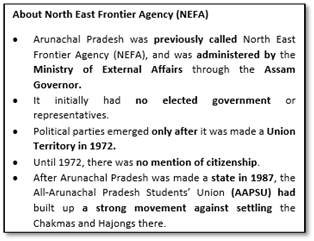
What is the state’s stand at present?
- All parties are unanimous that permanent settlement would contravene the Bengal Eastern Frontier Regulation, 1873, Scheduled District Act, 1874, Assam Frontier Tract Regulation, 1880, Assam Frontier Forest Regulation, 1891, Chin Hills Regulations, 1896, and Assam Frontier (Administration & Justice) Regulation, 1945 (1 of 1945).
- They have apprehension that court’s order would dilute the constitutional safeguards for the indigenous communities of the state, and pose a threat to their identity and culture.
Sources:
National Commission for Women
On January 31, 1992 the National Commission for Women was set up as statutory body under the National Commission for Women Act, 1990 to review the Constitutional and legal safeguards for women; recommend remedial legislative measures, facilitate redressal of grievances and advise the Government on all policy matters affecting women. The First Commission was constituted on 31st January 1992 with Mrs. Jayanti Patnaik as the Chairperson. The National Commission for Women, acting as a constitutional commission in the field of protection and promotion of women's rights, gender equality and empowerment and control of gender based violence, has been fulfilling important responsibilities such as providing advisory, executive and judicial assistance. The theme of this year’s foundation day is ‘She The Change Maker’.
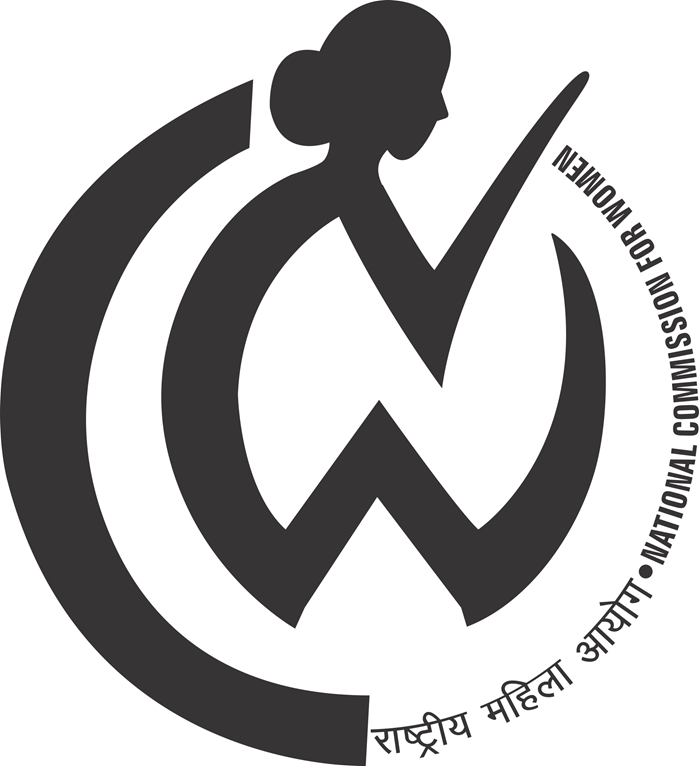
Source:
Ukraine-Russia crisis
In News
Ukraine has become the focus of geopolitical attention in recent weeks as a Russian troop buildup along its eastern border and a list of demands from the Kremlin have prompted threats of sanctions by the West and military deployment by NATO allies.
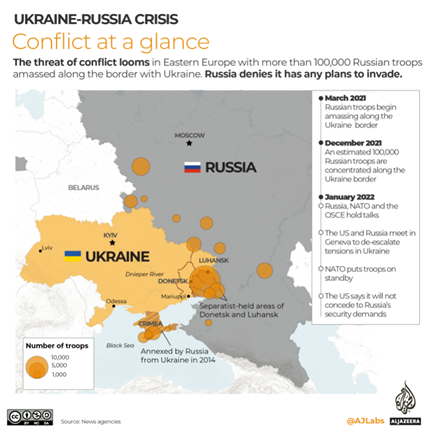
The developments leading to current crisis
- Since the Cold War ended, NATO has expanded eastwards by taking in 14 new countries, including the states of the former Warsaw Pact and the three Baltic nations that were once in the Soviet Union.
- Russia saw this as a threatening encroachment towards its borders and continues to allege it was a betrayal of Western promises at the start of the 1990s. However, the US and its allies deny this allegation.
- Ukraine is not a NATO member but has a promise dating from 2008 that it will eventually get to join.
- Since toppling a pro-Russian president in 2014, it has become closer politically to the West, staged joint military exercises with NATO and taken delivery of weapons including U.S. Javelin anti-tank missiles and Turkish drones.
- Kyiv and Washington see these as legitimate moves to bolster Ukraine’s defence after Russia seized the Crimea region in 2014 and provided backing to separatists who are still fighting government forces in eastern Ukraine.
- Russia says Ukraine’s growing ties with the alliance could make it a launch pad for NATO missiles targeted at Russia. Russian President says Russia needs to lay down “red lines” to prevent that.
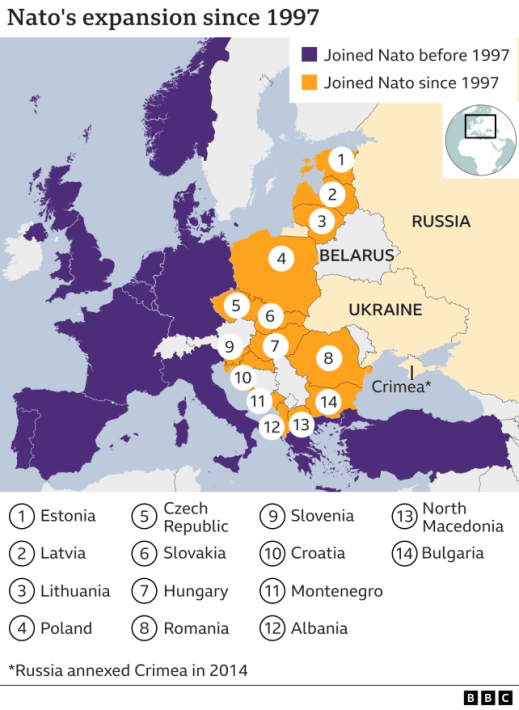
Key Possible reasons for Current Russia-Ukraine Crisis
- Geography and resources
- Ukraine is the second biggest country in Europe after Russia, has major ports on the Black Sea and shares borders with four NATO countries. It is a major exporter of corn and wheat.
- Europe depends on Russia for about one third of its natural gas – providing leverage for Russia in any dispute with the West – and one of the main pipelines passes through Ukraine.
- Controlling the Ukrainian territory that it crosses would enhance Russia’s pipeline security and protect its ability to “weaponise” energy supplies.
- However given the too high military cost involved it is unlikely that Russia would attempt to seize and defend large swathes of Ukrainian territory.
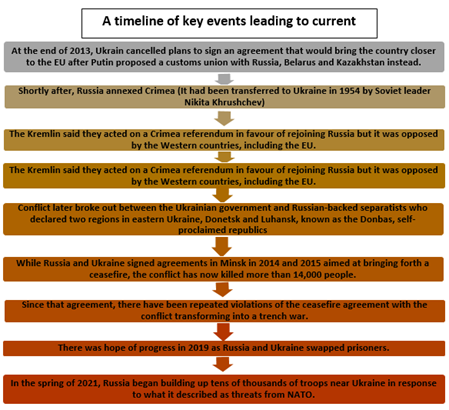
- History
- The two countries had been linked since the 9th century before the 1991 break-up of the Soviet Union. The two countries speak closely related languages and later formed, with Belarus, the Slav core of the Soviet Union.
- Many Russians feel a connection with Ukraine that they do not feel with other former Soviet republics in the Baltics, Caucasus and Central Asia.
- Russian President Putin alluded to this in a long essay in June 2021 in which he said Russians and Ukrainians were one people who shared a single “historic and spiritual space” and that the emergence of a “wall” between them in recent years was tragic.
- However, Kyiv rejected his argument as a politically motivated and over-simplified version of history.
- Russia Vs NATO
- Moscow accuses NATO countries of "pumping" Ukraine with weapons and the US of stoking tensions.
- Russia wants NATO to return to its pre-1997 borders. It demands no more eastward expansion and an end to NATO military activity in Eastern Europe. That would mean combat units being pulled out of Poland and the Baltic republics of Estonia, Latvia and Lithuania, and no missiles deployed in countries such as Poland and Romania.
- Russia has also proposed a treaty with the US barring nuclear weapons from being deployed beyond their national territories.
What does Russia want with Ukraine?
- Russia seized Crimea in 2014 arguing it had a historic claim to it. Ukraine was part of the Soviet Union, which collapsed in December 1991 and Russian President said it was the "disintegration of historical Russia".
- Recently Russian President called Russians and Ukrainians "one nation". He labelled Ukraine's current leaders as running an "anti-Russian project".
- Russia has also become frustrated that a 2015 Minsk peace deal for eastern Ukraine is far from being fulfilled.
- There are still no arrangements for independently monitored elections in the separatist regions. Russia denies accusations that it is part of the lingering conflict.
Why would the US want to get involved in this conflict?
- With its annexation of Crimea and support for the Donbas conflict, Russia has violated the Budapest Memorandum Security Assurances for Ukraine, a 1994 agreement between the US, UK and Russia that aims to protect Ukraine’s sovereignty in exchange for its commitment to give up its nuclear arsenal.
- Russian threats against Ukraine occur as Russian forces are moving into Belarus, which also raises questions about the Kremlin’s plans for invading other neighboring countries.
- Military support for Ukraine and political and economic sanctions are ways the US can make clear to Moscow that there will be consequences for its encroachment on an independent country. The risk, otherwise, is that the Kremlin might undertake other military and political actions that would further threaten European security and stability.
What will be the effect on India?
- Experts believe that Russia will need allies in case of war. Presently, China is considered its big ally, especially after sanctions. China is also supporting that Ukraine should not become a member of NATO.
- In such a situation, if there is a ban on Russia from the western countries and US, then China can compensate for it.
- This will further increase the closeness of China and Russia, which can have a bad effect on the friendship of India and Russia.
- About 60% of India's military supplies come from Russia, and this is a very important aspect. India and Russia have signed several important defence agreements, including the S400 missile system and AK-203 assault rifle.
- India and China are already face to face in eastern Ladakh. In this situation, India cannot take any risk to spoil relations with Russia.
- America is also an important partner of India. America has always supported India on many important occasions and issues.
- In such a situation, it would be difficult for India to bargain either with Russia or with the USA. Therefore, this situation is no less critical for India.
Question: Discuss the reasons for the Current Crisis between Russia and Ukrain. How will India be affected by this crisis?
Sources:
- What does Russia want with Ukraine? Tensions between Putin and NATO explained
- Ukraine and Russia explained in maps and charts
- A simple guide to the Ukraine-Russia crisis: 5 things to know
- Conflict in Ukraine
- Tensions are high on Ukraine's border with Russia. Here's what you need to know
- Explained: Why is Russia’s Putin drawing ‘red lines’ over Ukraine?
- Is Russia preparing to invade Ukraine? And other questions
- Russia-Ukraine conflict: How a war between the two nations can affect India adversely
- Ukraine-Russia conflict: India calls for peaceful resolution amid border tensions
- Ukraine-Russia crisis: Why should India care
- 5 things to know about why Russia might invade Ukraine and why the US is involved
- Explained: The surge in oil prices amid Russia-Ukraine conflict and its impact on Budget, inflation
- What is Russia's problem with NATO and how should the West respond?
- India's role in 'helping with Russia-Ukraine' conflict is 'welcome', says US; New Delhi asks Indians in Kyiv to register
- Why India Is Silent on the Ukraine Crisis
Vellalore Lake
This is image of Coimbatore’s Vellalore Lake, which has now become a butterfly hotspot. A miyawaki forest canopy with towering native trees and a dense belt of flowering plants has turned the city’s Vellalore Lake into a butterfly hotspot. Blue Mormons, the fourth largest butterfly of India and State butterfly of Maharashtra, have been sighted in great numbers. So far 83 species of butterfly have been recorded here. This criteria qualifies the wetland as a butterfly hotspot. Conservation efforts have been taken to revive the lake lately which de-silted the Rajavaaikaal channel, which connects the lake with the Noyyal, removed encroachments, and cleared the debris. After a gap of over 15 years, the lake filled up during the monsoons in 2018. A miyawaki forest sprung to life along the bund as a part of restoration.
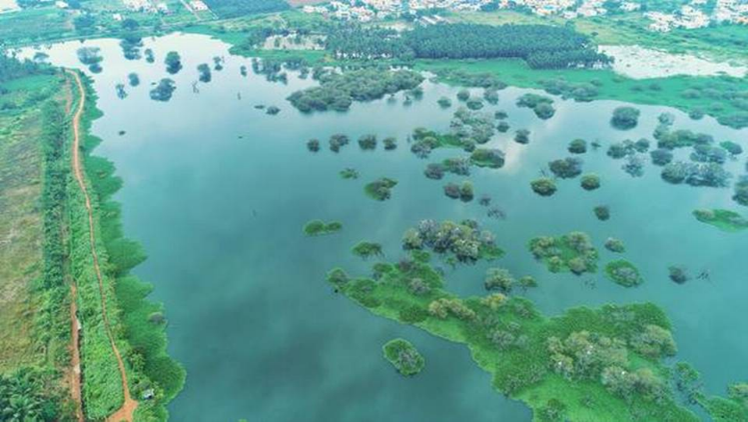
Source:
Beating Retreat Ceremony in India
- Context: 1,000 drones had lit up Delhi’s sky at the ‘Beating Retreat’ ceremony recently.
- 'Beating Retreat' is a centuries-old military tradition that dates back to the days when troops disengaged from the battle at sunset. As soon as the buglers sounded the retreat, the troops ceased fighting, sheathed their arms and withdrew from the battlefield.
- The ceremony reached Indian grounds during the early 1950s when Queen Elizabeth II and Prince Philip visited post-Independence India for the first time.
- Major Roberts of the Indian Army was called by Jawaharlal Nehru, the first prime minister of India, to arrange for something spectacular and unique for the Queen’s visit.
- This was when Major Robert uttered the idea of a Beating Retreat ceremony concocted by the armed forces and their associated bands. Since then, the Beating Retreat has become an inseparable part of the Republic Day celebrations, where guests from various nations are invited to witness the galore of our country.
- The 10-minute drone show was to commemorate the 75 years of Independence that is being celebrated this year as 'Azadi ka Amrit Mahotsav'.

Source:
- Watch: IIT-Delhi's 1,000 Made-in-India drones light up sky at Beating the retreat.
- 1,000 drones to light up Delhi sky at ‘Beating Retreat’ ceremony today
- Drones are the future air we ready
Image Source:
Artificial snow and Olympics
- Context: Artificial snow needs to be pumped to pull off the Olympics in Beijing.
- A recent report has stated the dangers of artificial snow on athletes’ bodies and the water wastage that happens inevitably for snow production at these games.
- Artificial Snow is the snow that is injected with water to get hardened and then treated with chemicals to keep the hardened snow in place.
- This is generally recommended for winter competitions as the natural snowfall is steadily decreasing globally.
- High volumes of water and energy are required to create slopes of artificial snow that are competition ready.
- Russia used 80% of artificial snow for competitions in the 2014 Sochi Olympics, that rose to 90% for the Pyongyang Winter Games.
- It is problematic for Beijing because the region despite being very low on water produces artificial snow via an over-reliance on groundwater (these games are estimated to require around 49 million gallons of water to be converted into snow) coupled with the ice glaciers around the area steadily melting since the 1950s at an unsustainable rate.
- This has raised worries among geographers.

Source:
- Explained: Why artificial snow needs to be pumped to pull off Beijing Winter Olympics
- How More Than 1.2 Million Cubic Tons of Artificial Snow Was Made for the Beijing Olympics
Image Source:
NeoCov
- Context: A deadlier variant of the coronavirus-the NeoCov has become a rising concern to the humanity in the recent past.
- NeoCoV is a bat coronavirus that was first identified in 2011 in a species of bats known as Neoromicia. Commonly known as aloe bats, this species is distributed in the Afro-Malagasy region.
- NeoCoV shares an 85% similarity to MERS-CoV (Middle East Respiratory Syndrome coronavirus) in the genome sequence, making it the closest known relative of MERS-CoV.
- NeoCoV has not infected humans so far as it cannot interact with human receptors until it mutates further (a particular type of mutation known as T510F).
- Infact, NeoCov could penetrate human cells in the same way as the Covid-19 virus and is only one mutation away from becoming dangerous for humans.
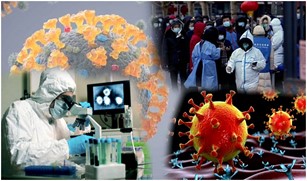
Source:
- Explained | NeoCoV — what it is and what it is not
- NeoCoV alert: Why you do not need to be worried and what original study on it says
- NeoCov, a kind of coronavirus, not a threat to humans until it mutates further, research shows
Image Source:
Jeevan Raksha Padak
- Context: The President of India has approved the conferment of Jeevan Raksha Padak Series of Awards 2021 on 51 persons.
- Jeevan Raksha Padak awards, an offshoot of the Ashoka Chakra series of Gallantry awards, were instituted in the year 1961.
- It is awarded for conspicuous courage in saving life under circumstances of very great danger to the life of the rescuer. The awards are given under three categories namely:
- Sarvottam Jeevan Raksha Padak
- Uttam Jeevan Raksha Padak and
- Jeevan Raksha Padak
- The award is given for meritorious act of human nature in saving the life of a person in cases like drowning in water, accidents, fire incidents, electrocution, natural calamities, rescue operation in mines etc.
- It is presented in the form of a medallion and a certificate signed by the Union Home Minister.
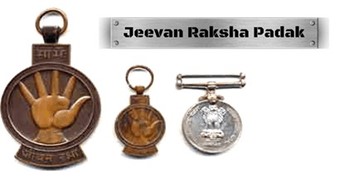
Source:
Image Source:
India’s core inflation puzzle: HBL
Essence: The article talks about the revision needed in the current consumption basket, which is used for inflation measurement. Monetary policy, which considers CPI, has food items with highest weightage. Food items are most volatile one also. Due to this CPI value also tends to be volatile. But one has to understand that changes in prices of food and fuel is high due to structural issues and are slightly insensitive to monetary policy. But core inflation, which does not include food and fuel items, is steadier and stickier. This leads us to conclusion that variation in inflation is mainly due to food inflation.
The correlation when studied between overall inflation and its various components resulted in high correlation with food inflation. Also inflation impacts different classes differently because of difference in consumption. The segment where food expenditure constitutes 80% of expenditure is the most sensitive segment from viewpoint of inflation. While the non-food one remains insignificant. CPI numbers are calculated on the basis of consumption expenditure prevalent in year 2011-12 .In order to get clear understanding of behavior of CPI, there is an immediate need to align it with the current consumption. As all of this will certainly impact on how the monetary policy is framed and decisions are taken on various economic agents.
Why you should read this article?
- To understand the reason in variation of CPI core and non-core inflation.
- To understand the need to revise the current consumption expenditure pattern.
Source:
Do private sector ‘meritocracy revolutions’ show the way for civil service reforms?: ORF
Essence: The article talks about how meritocracy in the private sector serves as a model for civil service reforms that governments should follow. The movement of power from vertical hierarchies to horizontal networks that value talent was the catalyst for revolutions in: the IPL for cricketers, streaming platforms for actors, etc. As per the article, while meritocracy in public service selection was undisputed, there is lack of a competent performance management system. As a result, low-productivity individuals have remained in the services. The article refers to the 'Mission Karmayogi' established by the Indian government in 2020, to revolutionise the Indian civil service's learning ecosystem, transforming it into a "smart, accountable, citizen-centric, and effective public service.
As per the article, the concept of lateral entry seems appealing. However, given the current climate in government, there may not be many qualified men and women willing to forsake private-sector pay in order to join the civil service and adapt to a foreign operating system. The Capacity Building Commission may be of minor utility in a political environment that has disincentivized learning and professionalism and has been progressively destructive of good governance, and a daring human resource reboot that is envisaged can be described as a fond hope.
Why should you read this article?
- To comprehend the benefits and drawbacks of India's meritocracy.
- To understand why the concept of lateral entry seems appealing in theory only.
- To figure out what the best course of action might be.
Source:
Why the central scheme for judicial infrastructure needs an urgent overhaul: ORF
Essence: The editorial presents the case of the laggard scheme for Development of Infrastructure Facilities for Districts and Subordinate Judiciary- its finances, federal allocation, need of judicial infrastructure and completion of projects. This centrally sponsored scheme was initiated with a view to cater to needs of judicial infrastructure post liberalization era in the district and lower courts. However, the scheme has met with many roadblocks.
Firstly, though the funding has increased with time, it has not been consistent. Not only that States’ contribution is less than par but their utilization is inadequate as well. Often, funds get lapsed or are diverted or get caught in poor coordination between various organs of the government. This results in shortage of basic infrastructure like court rooms, ladies toilet, judicial quarters, etc. There is scant information available in public domain on utilization of funds, which results in opacity in funding and slow audit, leading to slow reforms. Though the recent Rs 9000 Cr funding is a positive step in the creating judicial infrastructure, there needs to be an accountable body to ensure funding is utilized and transparency is ensured.
Why you should read this article?
- To understand the reasons for failure of the scheme for Development of Infrastructure Facilities for Districts and Subordinate Judiciary.
- To know the alternative methods for completion of pending judicial infrastructure reforms.
Source:
Why the central scheme for judicial infrastructure needs an urgent overhaul
Technology for Society
Background
- According to industry estimates, 15 lakh engineers graduate in India every year out of which only 2.5 lakh students land relevant jobs in respective sectors.
- Anubrotto, known as Dunu Roy, has worked in rural and urban development, working on many issues – leadership training, environmental planning, pollution control, poverty, land and water, secure settlements, and more.
How Duno used his technical field knowledge to empower society?
- Duno, an IIT pass-out in 1970’s still envisions a true India and find the urge to do something, the desire to learn more, is still very vigorous.
- He turned his whole life for the urban and rural development to make his engineering meaningful.
- Dunu began his journey as a student volunteer through Rapid Economic Advancement (FREA), a collective of US-based Indians working towards the development of SMEs.
- Realizing that students of illustrious colleges like IITs and IIMs had little to no understanding of the reality of their country, he began to take students to study poverty, exploitation and other realities of India.These made the application of Technical education in Rural India.
- Further, Duno set up Hazard Centre in 1996 which worked with marginalized groups across India to help them face and adapt to changing circumstances and understand how to deal with Pollution and Disasters.
- Dunu and his colleagues began kaam aur kamai, an initiative that encouraged meaningful social work while earning a living within the community. The outcome was a vidushak karkhana, which was a small workshop to repair diesel pump sets and other rural machinery.
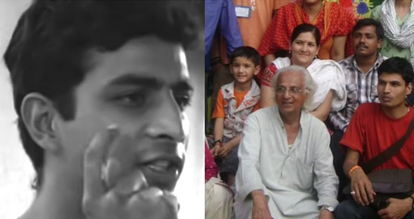
Quote:
”The only way you multiply resources is with technology. To really affect poverty, energy, health, education, or anything else - there is no other way.”-Vinod Khosla
Source:
Share the article
Get Latest Updates on Offers, Event dates, and free Mentorship sessions.

Get in touch with our Expert Academic Counsellors 👋
FAQs
UPSC Daily Current Affairs focuses on learning current events on a daily basis. An aspirant needs to study regular and updated information about current events, news, and relevant topics that are important for UPSC aspirants. It covers national and international affairs, government policies, socio-economic issues, science and technology advancements, and more.
UPSC Daily Current Affairs provides aspirants with a concise and comprehensive overview of the latest happenings and developments across various fields. It helps aspirants stay updated with current affairs and provides them with valuable insights and analysis, which are essential for answering questions in the UPSC examinations. It enhances their knowledge, analytical skills, and ability to connect current affairs with the UPSC syllabus.
UPSC Daily Current Affairs covers a wide range of topics, including politics, economics, science and technology, environment, social issues, governance, international relations, and more. It offers news summaries, in-depth analyses, editorials, opinion pieces, and relevant study materials. It also provides practice questions and quizzes to help aspirants test their understanding of current affairs.
Edukemy's UPSC Daily Current Affairs can be accessed through:
- UPSC Daily Current Affairs can be accessed through Current Affairs tab at the top of the Main Page of Edukemy.
- Edukemy Mobile app: The Daily Current Affairs can also be access through Edukemy Mobile App.
- Social media: Follow Edukemy’s official social media accounts or pages that provide UPSC Daily Current Affairs updates, including Facebook, Twitter, or Telegram channels.



